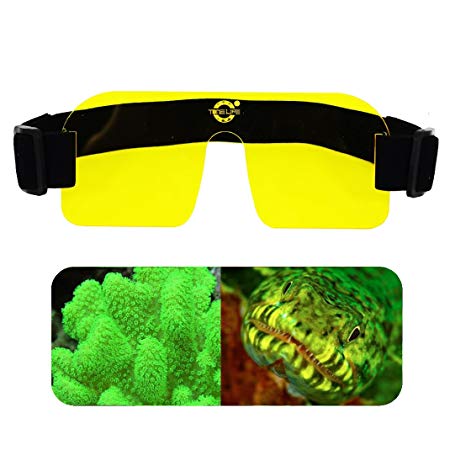- Make sure this fits by entering your model number.
- Looking for something different? Tired of night diving? Fluorescence will give you a whole new perspective on the world beneath the waves. With Tonelife excitation and barrier filters, you can convert your existing lights into a fluorescence set-up. No need to purchase expensive specialty lights or guided dives. Be the explorer!
- Why yellow mask filter? This is because unlike UV, blue light is not invisible to the human eye; without the filter you will therefore not be able to see the fluorescence because it will be overwhelmed by the ambient light.
- 6.1″ Wide, 2.56″ High , 0.12” Thickness ; Adjustable Elastic Cord Length: 53cm / 21 inch
- Fits over Dive, Scuba, Snorkeling Mask
- ACRYLIC / PMMA material!!
Looking for something different? Tired of night diving? Fluorescence will give you a whole new perspective on the world beneath the waves. With our line of excitation and barrier filters, you can convert your existing lights into a fluorescence set-up. No need to purchase expensive specialty lights or guided dives. Be the explorer!
About Fluorescence
To see this underwater, you’ll need a light with a dichroic “excitation filter” attached AND a TONELIFE yellow “barrier filter” on your mask and camera system. What you’ll generally see is a glow emitted from a variety of corals and animals, mostly in greens, blues, and reds. You may find two of the same type of corals—one which fluoresces, and one which doesn’t. Dive your favorite spots in a different light and see what you’ve been missing!
Fluorescence is technically the photon emitted as an electron relaxes from its excited state to its ground state. In layman’s terms, it’s the glowing you are familiar with in glow sticks, jellyfish, and forensics. A variety of organisms and materials above and below water exhibit fluorescence—often with the introduction of a particular wavelength of light.
Fluorescence photography may be captured during the day by experimenting with using a very powerful, filtered light source and under-exposing the ambient light.

